

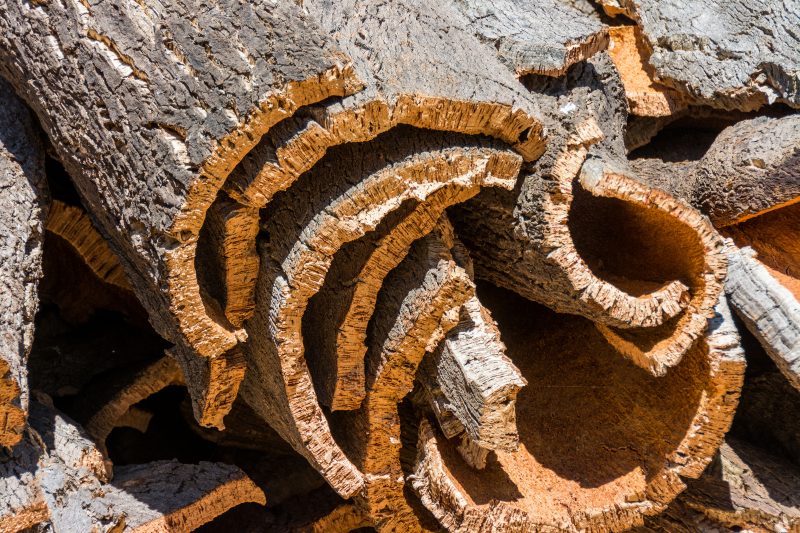
Cork is a pure natural material made from the bark of the cork oak tree (Quercus suber), which has the features of lightweightness, hydrophobicity, flame retardance, and elasticity. Cork is widely used to make all kinds of products, the most commonly seen is wine corks used to seal wine bottles.
The use of cork has a long history: thousands of years ago, the Romans discovered that the bark of the cork oak tree could float on water, so it was used to make fishing net buoys and sandals. Cork is also very light, only 0.16 grams per cubic centimeter. The honeycomb-like cellular structure of cork (where each cell is filled with a mixture of gases similar to air) makes corks elastic and compressible. Therefore, cork is able to absorb shocks well and recover to its initial shape and volume when decompressed.
Cork is an environmentally friendly material. It is a representative model for sustainable forestry. The cork harvesting process is strictly monitored to ensure that no trees are cutt down or damaged. According to the cork company Amorim Cork’s carbon disclosure report (conducted by PricewaterhouseCoopers) Amorim’s cork stopper does not increase carbon emissions but in fact absorbs carbon dioxide, thereby making Amorim’s cork a carbon-negative product.
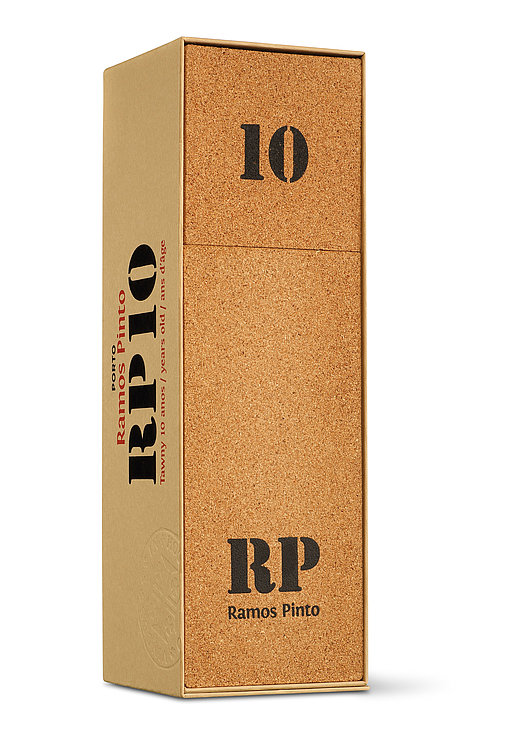
Omdesign created a limited-edition Port wine packaging for the century-old Port winery Ramos Pinto. This packaging uses cardboard for a sleeve, with two cork squares inside. The year and brand name of the port is simply printed on the sleeves and the cork square, presenting a neat vision.

There are bottle-shaped holes in the two cork squares. The upper cover and lower box are perfectly paired with the sleeve to protect the fragile wine bottle. The cork acts as an excellent heat insulator so the precious port is not easily affected by temperature changes.
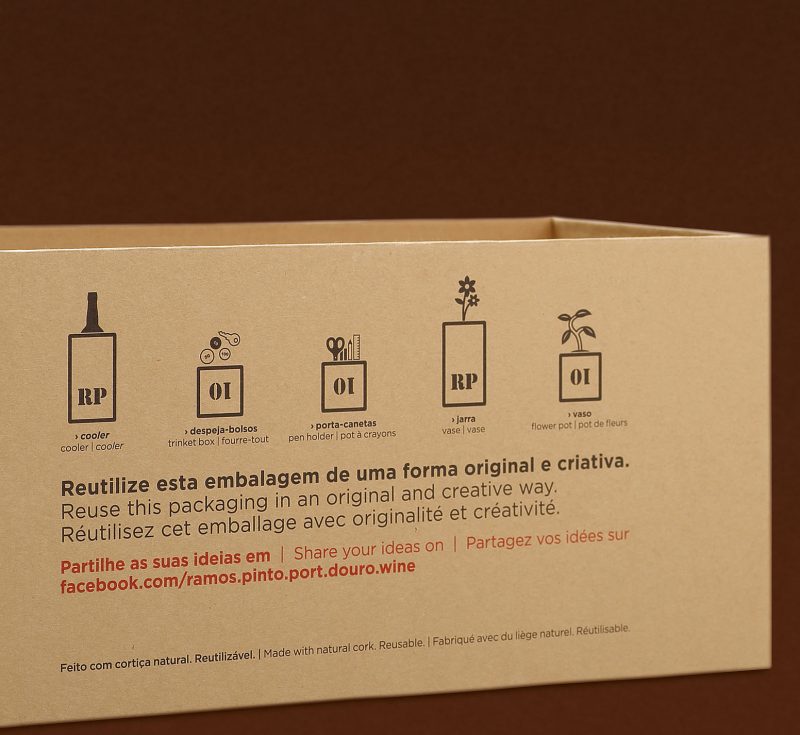
This cork packaging can be also used for many daily functions, such as, as a container for storing small stationery or as a flowerpot, a vase, or a cooler for ice-cold wine.
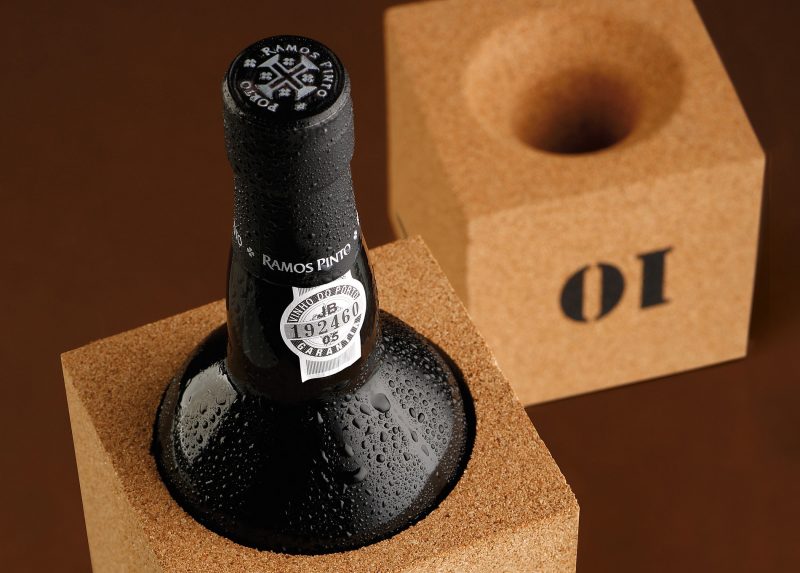
This cork packaging has the advantages of being lightweight, reusable, aesthetically pleasing, and environmentally friendly!
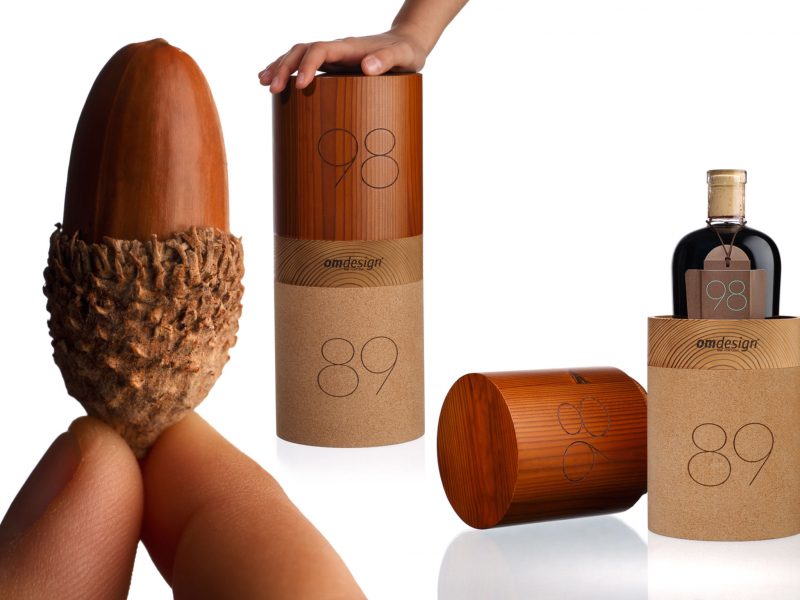
Omdesign challenged itself to promote the concept of sustainable packaging design and created this wine packaging inspired by the fruit of the oak tree.
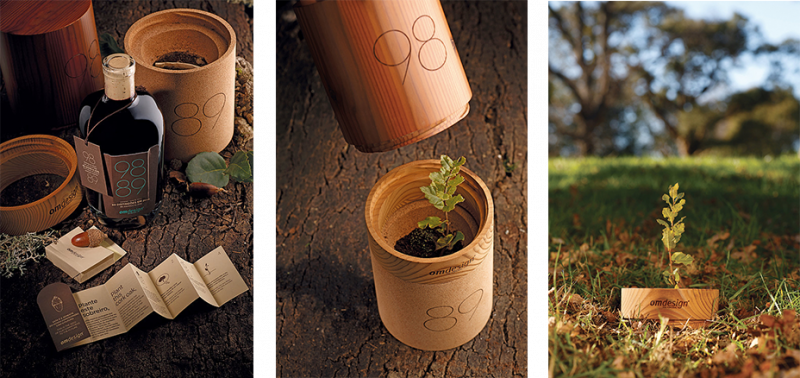
This packaging is composed of cork, wood, and contains a real oak seed. This cork packaging is made into the shape of a flowerpot. Consumers can directly water the cork flowerpot, wait for the oak tree seed to grow into a sapling, before transplant the sapling to the land. The tiny sapling grows into a large oak tree again, and when the right time comes, the bark of the oak tree can be re-made into cork products that then continue to grow. By doing so, Omdesign is able to realize the design concept, planting the seed of our commitment to the future.

Another masterpiece from Omdesign in 2020, this packaging is composed of eight naturally degradable materials parts. The delicate structure is designed with minimal processing. The cardboard is a natural color, and there is no excessive printing, though attractive graphics design can be used to make consumers smile.

For this packaging, cork is used as the inner lining to safely hold the products, and a cardboard structure is used on the sides to protect the fragile product from shaking.

Users can use the cork lining as a tray for serving meals. The texture is simple but has a solid pastoral style, evocative of enjoying delicious agricultural products in a vineyard or an oak garden while having a breeze coming from the Mediterranean.
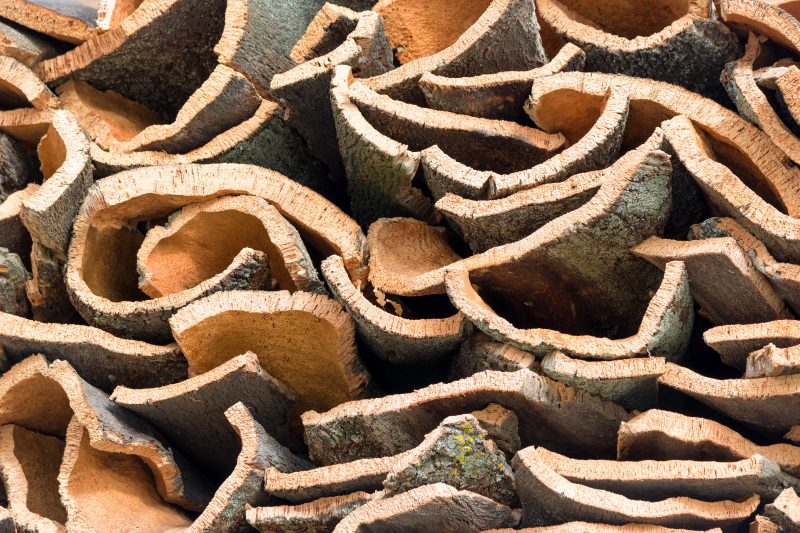
Lightweight, waterproof, flame-retardant, shock-absorbing, naturally degradable or recycled and reproduced, the above keywords show that cork is a good choice of environmentally friendly materials to replace the plastic lining of packaging. Not only can cork reduce carbon emissions, but it is also a material that may help us achieve carbon neutrality.
It is a pity that although cork has the above advantages, it is not widely used as the raw material is relatively expensive. Moreover, cork oak is native to the Mediterranean region and thus is restricted to limited growing areas. However, as an alternative material for plastic packaging, we believe that cork is a promising material in this era of sustainability.
Fudy Group had used cork for the inner lining of packaging during the stage of materials development (click here). Unfortunately, due to cost considerations, it could not be mass-produced. Fudy sincerely hopes to use more environmentally friendly packaging materials in the future; meanwhile, we would certainly retain an open mind in dealing with the challenges we may encounter.
Power for the possible! We’re Fudy, your product packaging consultant.
Fudy Group doesn’t own the copyrights for the examples.
SOURCE|

FUDY SOLUTIONS
FUDY SOLUTIONS 3054 Lawrence Expy Santa Clara, CA 95051 USA
